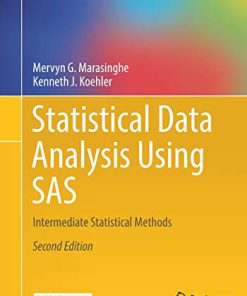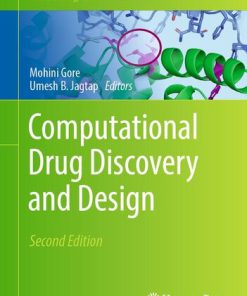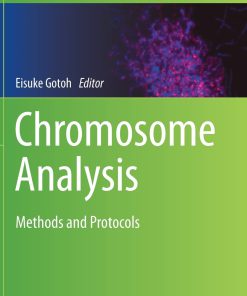Statistical Methods in Biology Design and Analysis of Experiments and Regression 1st Edition by SJ Welham, SA Gezan, SJ Clark, A Mead ISBN 9781439808788 1439808783
$50.00 Original price was: $50.00.$25.00Current price is: $25.00.
Statistical Methods in Biology Design and Analysis of Experiments and Regression 1st Edition by SJ Welham, SA Gezan, SJ Clark, A Mead – Ebook PDF Instant Download/Delivery: 9781439808788 ,1439808783
Full download Statistical Methods in Biology Design and Analysis of Experiments and Regression 1st Edition after payment

Product details:
ISBN 10: 1439808783
ISBN 13: 9781439808788
Author: SJ Welham, SA Gezan, SJ Clark, A Mead
Statistical Methods in Biology Design and Analysis of Experiments and Regression 1st Edition Table of contents:
1 Introduction
1.1 Different Types of Scientific Study
1.2 Relating Sample Results to More General Populations
1.3 Constructing Models to Represent Reality
1.4 using Linear Models
1.5 Estimating the Parameters of Linear Models
1.6 Summarizing the Importance of Model Terms
1.7 The Scope of This Book
2 A Review of Basic Statistics
2.1 Summary Statistics and Notation for Sample Data
2.2 Statistical Distributions for Populations
2.2.1 Discrete Data
2.2.2 Continuous Data
2.2.3 The Normal Distribution
2.2.4 Distributions Derived from Functions of Normal Random Variables
2.3 From Sample Data to Conclusions about the Population
2.3.1 Estimating Population Parameters Using Summary Statistics
2.3.2 Asking Questions about the Data: Hypothesis Testing
2.4 Simple Tests for Population Means
2.4.1 Assessing the Mean Response: The One-Sample t-Test
2.4.2 Comparing Mean responses: The Two-Sample t-Test
2.5 Assessing the Association between Variables
2.6 Presenting Numerical Results
Exercises
3 Principles for Designing Experiments
3.1 Key Principles
3.1.1 Replication
3.1.2 Randomization
3.1.3 Blocking
3.2 Forms of Experimental Structure
3.3 Common Forms of Design for Experiments
3.3.1 The Completely Randomized Design
3.3.2 The Randomized Complete Block Design
3.3.3 The Latin Square Design
3.3.4 The Split-Plot Design
3.3.5 The Balanced Incomplete Block Design
3.3.6 Generating a Randomized Design
Exercises
4 Models for a Single Factor
4.1 Defining the Model
4.2 Estimating the Model Parameters
4.3 Summarizing the Importance of Model Terms
4.3.1 Calculating Sums of Squares
4.3.2 Calculating Degrees of Freedom and Mean Squares
4.3.3 Calculating Variance Ratios as Test Statistics
4.3.4 The Summary ANOVA Table
4.4 Evaluating the Response to Treatments
4.4.1 Prediction of Treatment Means
4.4.2 Comparison of Treatment Means
4.5 Alternative Forms of the Model
Exercises
5 Checking Model Assumptions
5.1 Estimating Deviations
5.1.1 Simple Residuals
5.1.2 Standardized Residuals
5.2 Using Graphical Tools to Diagnose Problems
5.2.1 Assessing Homogeneity of Variances
5.2.2 Assessing Independence
5.2.3 Assessing Normality
5.2.4 Using Permutation Tests Where Assumptions Fail
5.2.5 The Impact of Sample Size
5.3 Using Formal Tests to Diagnose Problems
5.4 Identifying Inconsistent Observations
Exercises
6 Transformations of the Response
6.1 Why Do We Need to Transform the Response?
6.2 Some Useful Transformations
6.2.1 Logarithms
6.2.2 Square Roots
6.2.3 Logits
6.2.4 Other Transformations
6.3 Interpreting the Results after Transformation
6.4 Interpretation for Log-Transformed Responses
6.5 Other Approaches
Exercises
7 Models with a Simple Blocking Structure
7.1 Defining the Model
7.2 Estimating the Model Parameters
7.3 Summarizing the Importance of Model Terms
7.4 Evaluating the Response to Treatments
7.5 Incorporating Strata: The Multi-Stratum Analysis of Variance
Exercises
8 Extracting Information about Treatments
8.1 From Scientific Questions to the Treatment Structure
8.2 A Crossed Treatment Structure with Two Factors
8.2.1 Models for a Crossed Treatment Structure with Two Factors
8.2.2 Estimating the Model Parameters
8.2.3 Assessing the Importance of Individual Model Terms
8.2.4 Evaluating the Response to Treatments: Predictions from the Fitted Model
8.2.5 The Advantages of Factorial Structure
8.2.6 understanding Different Parameterizations
8.3 Crossed Treatment Structures with Three or More Factors
8.3.1 Assessing the Importance of Individual Model Terms
8.3.2 Evaluating the Response to Treatments: Predictions from the Fitted Model
8.4 Models for Nested Treatment Structures
8.5 Adding Controls or Standards to a Set of Treatments
8.6 Investigating Specific Treatment Comparisons
8.7 Modelling Patterns for Quantitative Treatments
8.8 Making Treatment Comparisons from Predicted Means
8.8.1 The Bonferroni Correction
8.8.2 The False Discovery Rate
8.8.3 All Pairwise Comparisons
8.8.3.1 The LSD and Fisher’s Protected LSD
8.8.3.2 Multiple Range Tests
8.8.3.3 Tukey’s Simultaneous Confidence Intervals
8.8.4 Comparison of Treatments against a Control
8.8.5 Evaluation of a Set of Pre-Planned Comparisons
8.8.6 Summary of Issues
Exercises
9 Models with More Complex Blocking Structure
9.1 The Latin Square Design
9.1.1 Defining the Model
9.1.2 Estimating the Model Parameters
9.1.3 Assessing the Importance of Individual Model Terms
9.1.4 Evaluating the Response to Treatments: Predictions from the Fitted Model
9.1.5 Constraints and Extensions of the Latin Square Design
9.2 The Split-Plot Design
9.2.1 Defining the Model
9.2.2 Assessing the Importance of Individual Model Terms
9.2.3 Evaluating the Response to Treatments: Predictions from the Fitted Model
9.2.4 Drawbacks and Variations of the Split-Plot Design
9.3 The Balanced Incomplete Block Design
9.3.1 Defining the Model
9.3.2 Assessing the Importance of Individual Model Terms
9.3.3 Drawbacks and Variations of the Balanced Incomplete Block Design
Exercises
10 Replication and Power
10.1 Simple Methods for Determining Replication
10.1.1 Calculations Based on the LSD
10.1.2 Calculations Based on the Coefficient of Variation
10.1.3 Unequal Replication and Models with Blocking
10.2 Estimating the Background Variation
10.3 Assessing the Power of a Design
10.4 Constructing a Design for a Particular Experiment
10.5 A Different Hypothesis: Testing for Equivalence
Exercise
11 Dealing with Non-Orthogonality
11.1 The Benefits of Orthogonality
11.2 Fitting Models with Non-Orthogonal Terms
11.2.1 Parameterizing Models for Two Non-Orthogonal Factors
11.2.2 Assessing the Importance of Non-Orthogonal Terms: The Sequential ANOVA Table
11.2.3 Calculating the Impact of Model Terms
11.2.4 Selecting the Best Model
11.2.5 Evaluating the Response to Treatments: Predictions from the Fitted Model
11.3 Designs with Planned Non-Orthogonality
11.3.1 Fractional Factorial Designs
11.3.2 Factorial Designs with Confounding
11.4 The Consequences of Missing Data
11.5 Incorporating the Effects of unplanned Factors
11.6 Analysis Approaches for Non-Orthogonal Designs
11.6.1 A Simple Approach: The Intra-Block Analysis
Exercises
12 Models for a Single Variate: Simple Linear Regression
12.1 Defining the Model
12.2 Estimating the Model Parameters
12.3 Assessing the Importance of the Model
12.4 Properties of the Model Parameters
12.5 using the Fitted Model to Predict Responses
12.6 Summarizing the Fit of the Model
12.7 Consequences of uncertainty in the Explanatory Variate
12.8 using Replication to Test Goodness of Fit
12.9 Variations on the Model
12.9.1 Centering and Scaling the Explanatory Variate
12.9.2 Regression through the Origin
12.9.3 Calibration
Exercises
13 Checking Model Fit
13.1 Checking the Form of the Model
13.2 More Ways of Estimating Deviations
13.3 using Graphical Tools to Check Assumptions
13.4 Looking for Influential Observations
13.4.1 Measuring Potential Influence: Leverage
13.4.2 The relationship between residuals and Leverages
13.4.3 Measuring the Actual influence of individual Observations
13.5 Assessing the Predictive Ability of a Model: Cross-Validation
Exercises
14 Models for Several Variates: Multiple Linear Regression
14.1 Visualizing Relationships between Variates
14.2 Defining the Model
14.3 Estimating the Model Parameters
14.4 Assessing the Importance of Individual Explanatory Variates
14.4.1 Adding Terms into the Model: Sequential ANOVA and Incremental Sums of Squares
14.4.2 The Impact of Removing Model Terms: Marginal Sums of Squares
14.5 Properties of the Model Parameters and Predicting Responses
14.6 Investigating Model Misspecification
14.7 Dealing with Correlation among Explanatory Variates
14.8 Summarizing the Fit of the Model
14.9 Selecting the Best Model
14.9.1 Strategies for Sequential Variable Selection
14.9.2 Problems with Procedures for the Selection of Subsets of Variables
14.9.3 Using Cross-Validation as a Tool for Model Selection
14.9.4 Some Final Remarks on Procedures for Selecting Models
Exercises
15 Models for Variates and Factors
15.1 Incorporating Groups into the Simple Linear Regression Model
15.1.1 An Overview of Possible Models
15.1.2 Defining and Choosing between the Models
15.1.2.1 Single Line Model
15.1.2.2 Parallel Lines Model
15.1.2.3 Separate Lines Model
15.1.2.4 Choosing between the Models: The Sequential ANOVA Table
15.1.3 An Alternative Sequence of Models
15.1.4 Constraining the intercepts
15.2 Incorporating Groups into the Multiple Linear Regression Model
15.3 Regression in Designed Experiments
15.4 Analysis of Covariance: A Special Case of Regression with Groups
15.5 Complex Models with Factors and Variates
15.5.1 Selecting the Predictive Model
15.5.2 Evaluating the Response: Predictions from the Fitted Model
15.6 The Connection between Factors and Variates
15.6.1 Rewriting the Model in Matrix Notation
Exercises
16 Incorporating Structure: Linear Mixed Models
16.1 Incorporating Structure
16.2 An Introduction to Linear Mixed Models
16.3 Selecting the Best Fixed Model
16.4 Interpreting the Random Model
16.4.1 The Connection between the Linear Mixed Model and Multi-Stratum ANOVA
16.5 What about Random Effects?
16.6 Predicting Responses
16.7 Checking Model Fit
16.8 An Example
16.9 Some Pitfalls and Dangers
16.10 Extending the Model
Exercises
17 Models for Curved Relationships
17.1 Fitting Curved Functions by Transformation
17.1.1 Simple Transformations of an Explanatory Variate
17.1.2 Polynomial Models
17.1.3 Trigonometric Models for Periodic Patterns
17.2 Curved Surfaces as Functions of Two or More Variates
17.3 Fitting Models Including Non-Linear Parameters
Exercises
18 Models for Non-Normal Responses: Generalized Linear Models
18.1 Introduction to Generalized Linear Models
18.2 Analysis of Proportions Based on Counts: Binomial Responses
18.2.1 understanding and Defining the Model
18.2.2 Assessing the Importance of the Model and Individual Terms: The Analysis of Deviance
18.2.2.1 Interpreting the ANODEV with No Over-Dispersion
18.2.2.2 Interpreting the ANODEV with Over-Dispersion
18.2.2.3 The Sequential ANODEV Table
18.2.3 Checking the Model Fit and Assumptions
18.2.4 Properties of the Model Parameters
18.2.5 Evaluating the Response to Explanatory Variables: Prediction
18.2.6 Aggregating Binomial Responses
18.2.7 The Special Case of Binary Data
18.2.8 Other Issues with Binomial Responses
18.3 Analysis of Count Data: Poisson Responses
18.3.1 understanding and Defining the Model
18.3.2 Analysis of the Model
18.3.3 Analysing Poisson Responses with Several Explanatory Variables
18.3.4 Other Issues with Poisson Responses
18.4 Other Types of GLM and Extensions
Exercises
19 Practical Design and Data Analysis for Real Studies
19.1 Designing Real Studies
19.1.1 Aims, Objectives and Choice of Explanatory Structure
19.1.2 Resources, Experimental Units and Constraints
19.1.3 Matching the Treatments to the Resources
19.1.4 Designs for Series of Studies and for Studies with Multiple Phases
19.1.5 Design Case Studies
Case Study 19.2: Multi-Phase Experiments – Gene Expression Microarrays for Plant Response to Pathogens
Case Study 19.3: Designing a Sampling Scheme to Detect Variation within a Population
19.2 Choosing the Best Analysis Approach
19.2.1 Analysis of Designed Experiments
19.2.2 Analysis of Observational Studies
19.2.3 Different Types of Data
19.3 Presentation of Statistics in Reports, Theses and Papers
19.3.1 Statistical Information in the Materials and Methods
19.3.2 Presentation of Results
19.4 And Finally…
References
Appendix A: Data Tables
Appendix B: Quantiles of Statistical Distributions
Appendix C: Statistical and Mathematical Results
C.1 Derivation of Least Squares Estimates for a Model with a Single Factor
C.2 Partitioning the Total Sum of Squares for a Model with a Single Factor
C.3 Derivation of Least Squares Estimates for a Model with a Single Variate
C.4 Variances and Standard Errors of Linear Combinations of Random Variables
C.5 Matrix Addition and Multiplication
Index
People also search for Statistical Methods in Biology Design and Analysis of Experiments and Regression 1st Edition:
statistical methods and analysis
statistical analysis biology
statistical analysis biology definition
statistical methods in bioinformatics pdf
statistical analysis of biological data
Tags: SJ Welham, SA Gezan, SJ Clark, A Mead, Statistical Methods, Biology Design, Experiments, Regression
You may also like…
Uncategorized
Computers - Computer Science
Mathematics - Mathematical Statistics
Design and Analysis of Experiments 9th Edition by Douglas C Montgomery ISBN 9781119113478 1119113474
Biology and other natural sciences Biostatistics
Uncategorized
Business & Economics - Econometrics
Sampling: Design and Analysis (Chapman & Hall/CRC Texts in Statistical Science), 3rd Edition Lohr
Uncategorized
Chromosome Analysis Methods and Protocols Methods in Molecular Biology 2519 Eisuke Gotoh (Editor)











